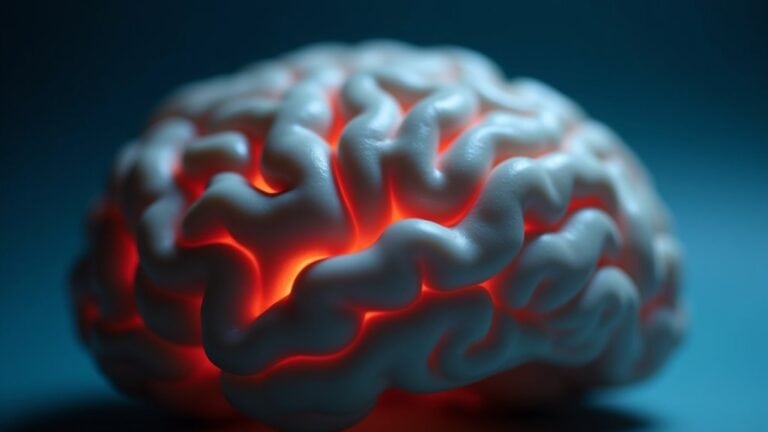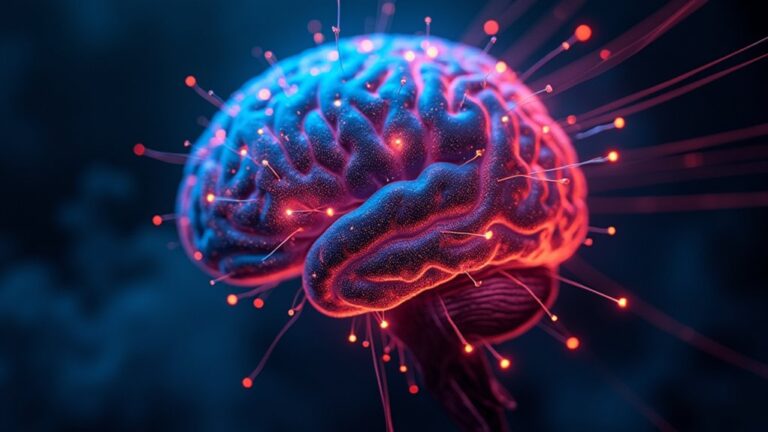The MARS model breaks down workplace performance into four key elements that shape how employees behave and succeed. Motivation fuels effort, ability determines skills, role clarity guides actions, and situational factors set the stage for success or struggle. Whenever these pieces align, individuals thrive—but when one falters, performance suffers. Comprehension of this interplay helps managers address challenges systematically, whether it’s boosting engagement or removing roadblocks. The real question is: which factor needs attention initially?
The Four Key Factors of the MARS Model
The MARS model breaks down workplace behavior into four key factors that shape how people perform. Motivation drives employees to take action, influencing their effort and persistence. Ability refers to learned capabilities, including skills and knowledge, which determine what someone can do.
Role perceptions clarify how employees apprehend their tasks and responsibilities, ensuring alignment with expectations. Situational factors, like resources or workplace conditions, impact individual behavior beyond personal control. Together, these elements—motivation, ability, role perceptions, and situational factors—explain voluntary behaviors and workplace performance. Whenever all four align, employees thrive. Should one falter, performance suffers.
The MARS Model helps identify gaps, whether it’s unclear roles, lacking skills, or external barriers. Comprehension of these factors creates a roadmap for improving how teams function and succeed.
How Motivation Drives Employee Performance
Motivation shapes employee performance by influencing the direction of effort, guiding where focus is applied. The intensity and persistence of actions determine how much energy and commitment employees bring to tasks.
Intrinsic and extrinsic factors further shape whether motivation comes from personal fulfillment or external rewards.
Direction of Effort
- Role perceptions – Clear expectations guide employees on where to direct their effort, reducing wasted energy.
- Voluntary workplace behaviors – Motivation drives extra tasks beyond core duties, like helping colleagues.
- Quantity versus quality – Some prioritize speed, while others focus on precision, depending on situational factors.
- Persistence – Even with setbacks, motivated employees stay on course, refining their approach.
Intensity and Persistence
Effort doesn’t just need focus—it also requires energy and staying power. In the MARS Model, intensity refers to the vigor employees put into their tasks, while persistence reflects their willingness to sustain effort despite challenges. These factors shape performance by determining how deeply individuals engage with their work. Motivation drives both intensity and persistence, influencing behavior and consequences. Employees with high motivation exhibit greater effort, leading to better results. However, individual differences—such as personal goals or workplace support—also play a role.
| Factor | Influence on Performance |
|---|---|
| Motivation | Increases effort and focus |
| Intensity | Determines energy invested |
| Persistence | Guarantees long-term commitment |
| Individual Differences | Shapes unique responses |
Understanding these elements helps explain why some employees outperform others under similar conditions.
Intrinsic Vs Extrinsic
Employee performance often hinges on what drives them—internal passion or external rewards. The MARS model highlights how motivation, alongside ability, role perceptions, and situational factors, shapes effort and behaviors.
Intrinsic Motivation: Stems from personal satisfaction, mastery, or purpose. Employees with strong skills and capabilities often thrive when given autonomy, leading to sustained performance.
Extrinsic Motivation: Driven by rewards like pay or recognition. While effective in the short term, over-reliance can weaken intrinsic drive.
Balance Matters: Combining both types—aligning work with values (intrinsic) while offering fair compensation (extrinsic)—boosts individual behavior.
Role of Managers: Clear role perceptions and supportive situational factors, like skill development opportunities, amplify motivation and effort.
Understanding these dynamics helps optimize performance by addressing what truly motivates employees.
The Role of Ability in Workplace Success
Workplace success depends on both innate talents and learned skills, which shape an employee’s ability to perform tasks effectively. Matching competencies to job requirements guarantees better performance and job satisfaction.
Organizations can support growth by providing training and resources to boost employees’ existing abilities.
Innate Vs Learned Skills
Some people pick up new skills like they’re second nature, while others need more time to master them—that’s the difference between innate aptitudes and learned capabilities. The MARS Model highlights how ability, a mix of both, shapes workplace performance. Here’s how they differ:
- Aptitudes are natural talents, like quick problem-solving or creativity, that give some employees a head start.
- Learned capabilities are skills developed through training or experience, such as mastering software or communication techniques.
- Competencies blend both, combining innate strengths with honed abilities to drive superior results.
- Perceptions and motivation influence how employees apply their skills, affecting overall behavior and productivity.
While aptitudes can’t be taught, learned capabilities fill gaps, ensuring employees meet job demands. Balancing both optimizes performance under the MARS Model’s framework.
Competencies and Job Fit
Matching the right person to the right job isn’t just about skills—it’s about fit. The MARS Model of Individual behavior highlights how competencies—natural aptitudes, learned capabilities, and personal traits—shape an employee’s performance.
To explain individual behavior, the Model emphasizes that employees require accurate role perceptions and the right abilities to meet job demands. Situational factors include workplace tools, support, and job design, which influence how well an employee’s competencies align with their role. Whenever specific skills match task requirements, productivity and satisfaction improve.
Organizations must assess both innate and developed abilities to guarantee a strong person-job fit. This alignment reduces frustration, boosts engagement, and helps employees thrive. The MARS Model underscores that success depends on balancing competencies with situational needs, creating a harmonious workplace.
Enhancing Performance Abilities
- Competencies represent actions: Employees learn specific tasks through practice, turning knowledge into reliable performance.
- Learned capabilities tend to improve with experience, boosting efficiency and accuracy.
- Natural talents provide a foundation, but consistent training releases faster and performance potential.
- Physical and mental skills must align with job demands—like precision work requiring steady hands or problem-solving needing quick consideration.
Understanding Role Perceptions for Better Coordination
Clarity in job roles isn’t just about comprehension of what to do—it’s the foundation of smooth teamwork and strong performance. Role perceptions shape how employees prioritize tasks, allocate effort, and align with organizational goals.
When employees grasp their specific tasks and preferred behaviors, coordination improves, reducing confusion and wasted effort. Yet, only 39% of workers clearly know how their roles contribute to broader objectives. Managers must define task priority and expected standards to guarantee employee understanding.
A clear role eliminates guesswork, letting individuals focus on high-impact activities. Without it, misaligned efforts and conflicts arise, dragging down performance. By clarifying expectations, organizations empower employees to work efficiently, fostering a cohesive environment where everyone knows their part and how it fits the bigger image.
Situational Factors: External and Internal Influences
Workplace behavior doesn’t happen in a vacuum—it’s shaped by a mix of outside pressures and inner challenges. The MARS Model of Individual Behavior highlights how situational factors, both internal and external, create a difference in behavior and performance. These forces within a person and their external environment shape individual Behavior And Results.
External Factors: Workplace culture, policies, and economic conditions form the external environment influencing actions.
Internal Factors: Personal motivation, stress levels, and role perceptions drive forces within a person.
Role Perceptions and Situational Pressures: Misaligned expectations or unclear goals can disrupt performance.
Four Major Factors: Motivation, Ability, Role clarity, and Situational support combine to explain workplace consequences.
Understanding these internal and external influences helps explain why people act differently under similar conditions.
Applying the MARS Model to Improve Organizational Outcomes
Effective organizations don’t leave performance to chance—they use frameworks like the MARS Model to shape better results. By aligning ability, motivation, role perception, and situational factors with organizational goals, leaders can boost engagement and performance. Targeted development programs address skill gaps, while clear feedback improves role clarity. Job design and situational adjustments remove barriers, fostering motivation and productivity.
| MARS Factor | Intervention | Result |
|---|---|---|
| Ability | Training programs | Enhanced skills |
| Motivation | Recognition systems | Higher engagement |
| Role Perception | Clear expectations | Better alignment |
| Situation | Resource allocation | Reduced obstacles |
| Performance | Regular feedback | Continuous improvement |
The model helps diagnose issues systematically, ensuring employees have what they need to succeed. Whenever all four elements work together, organizations achieve stronger outcomes.
Conclusion
The MARS model gently unravels the delicate dance of workplace dynamics, where motivation lights the path, ability sharpens the steps, role clarity steadies the rhythm, and situational factors set the stage. Like a well-tuned orchestra, harmony emerges not by chance but through thoughtful alignment—each element quietly shaping performance, each adjustment softening friction. As nurtured with care, these threads weave a tapestry where potential flourishes, and effort finds its quiet reward.





